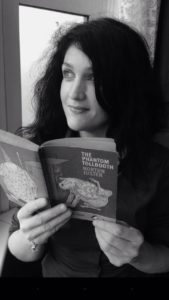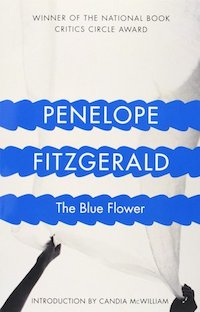The Blue Flower is based on the true-life love story between the 18th century German philosopher and poet Georg Philipp Friedrich (Fritz) Freiherr von Hardenberg and a young girl, Sophie von Kühn. Sounds dreary? No, it’s not, actually! It’s a great book, thanks to Penelope Fitzgerald’s light, funny and authentic writing. No wonder her horde of fans include Jonathan Franzen, Allan Hollinghurst, Julian Barnes, James Wood…I could go on and on…who all hail this as a modern classic.
The story line is simple enough: intelligent, well read and high born Fritz falls head over heals in love with 12 year old Sophie, a plain, shallow, middle-class girl with a brain ‘as empty as a new jug’. No one really understands what Fritz sees in Sophie. He compares her to a Raphael painting. Others see ‘a decent, good-hearted Saxon girl, potato-fed, with the bloom of thirteen summers, and the coarser glow of thirteen winters’.
Sophie’s diary suggest that the latter might be right…
January 8
Today once again we were alone and nothing much happened.
January 9
Today we were again alone and nothing much happened.
January 10
Hardenburch came at mid-day.
January 13
Today Hardenburch went away and I had nothing to amuse me.
Fritz, on the other hand, bubbles over with new ideas, philosophical and political, challenging his stern conservative father with French revolutionary thought, discussing philosophy with his fellow students.
Fritz is from a large, aristocratic, family – a sort of intellectual version of the von Trapps. Money is no longer plentiful and they’re stuck with numerous dilapidated properties (‘rain driving through broken windows’). Fritz goes to stay with the Just family to learn office management, his father keen on him going into the family business, and it’s through the Just family that he meets Sophie.
More than the story line, it’s the way it’s told that is the attraction with this book. The Blue Flower is a historical novel in the most understated way, we’re not hammered with historical facts and settings but instead, elegantly and almost unnoticeably transported to Germany in the 1790s. With superb descriptions of landscapes, places, habits (the annual washday of linen) and food (pig’s neck boiled with peppermint schnapps), topped off with sprinkles of Germanisms here and there (the Bernhard, good appetite), Fitzgerald creates a complete, authentic fictional world.
The chapters in The Blue Flower are short, the writing deceptively simple. So much is said with so few words, often with sharp wit. Every sentenced is moulded to perfection. Fitzgerald herself said of her writing that ‘I always feel the reader is very insulted by being told too much.’ I wish more contemporary writers would take heed.
The Blue Flower by Penelope Fitzgerald is published by Fourth Estate, 282 pages.





